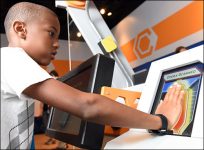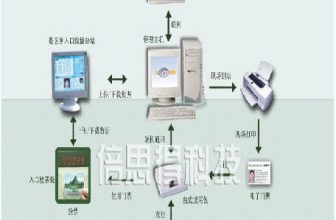
Houston Children’s Museum launches RFID game to increase the number of members
[ad_1]
In November last year, the Children’s Museum of Houston launched a special elite criminal search and espionage team (SECRET) game. The game requires a group of young visitors aged 6-12 to complete a series of tasks that require the participation of parents and children. The game uses passive low-frequency RFID technology to connect game participants with their respective tasks through the RFID wristband Codex.
The museum’s educational technology and exhibition development manager Keith T. Ostfeld said that since the game was launched, the number of museum members has grown. This is because, after completing one or two tasks, these game participants will want to complete more challenges, and buying membership tickets is cheaper than buying tickets for each visit.

(In the task briefing kiosk, the RFID reader will read the RFID chip of the SECRET participant’s Codex wristband)
In each task, the player’s task is to protect an underground crystal that can emit strange energy. To achieve this, they need to defeat the RIVAL organization that is trying to steal the crystal.
Ostfeld explained that the purpose of the game itself is to exercise the body and mind. He said: “The purpose of the game is to encourage children to use key skills, including problem-solving methods, observation and logical decision-making. The game includes 6 tasks, such as museum walking, clue finding, negotiation, puzzle solving and kiosk answering questions. The museum will not inform about the content of the tasks in advance. Usually, children will solve 1 or 2 tasks when they visit the museum for the first time, and some tasks need to be completed by visiting the museum again. Since the game needs to be completed by walking in the museum, the game exercises at the same time Body and mind.”

(Each participant wears a wristband with a built-in EM4200 LF 125 kHz RFID chip provided by EM Microelectronics)
First, participants need to pay $20 for the first task and $10 for each subsequent task. Participants will then receive a Codex wristband with a built-in EM4200 LF 125 kHz RFID chip provided by EM Microelectronics. Each child will also receive some gadgets, such as a magnifying glass and a flashlight.
The game was jointly developed by the Houston Children’s Museum and Schell, and includes a software that stores the wristband ID number and the task information bound to it. Although the software does not collect the names of every participant, it collects answers to three questions-such as “What is your phone number?”. In this way, children who lose their wristbands can still access their archived games.
After receiving the wristband and gadget, the participant can start the game and enter through a locked door. When the child handles the RFID reader next to the door of the house, the device will read the wristband ID number, and the door will automatically open. Then, participants can walk to the task booth, read the wristband, and view task information. All readers have built-in Phidgets PhidgetRFID printed circuit boards.
Game tasks may involve solving puzzles or walking through laser mazes. After completing the first part of the recognition task, participants are eligible to participate in the second part of the task, which is a test of mathematics or logical thinking. The museum hopes that parents can also participate together.

(Laser Maze)
When completing the task, participants can enter the data required for the next task at the RFID kiosk. This information will be stored in the software along with the wristband ID number. Ostfeld said: “Each task usually takes 45 minutes to complete.”
Currently, about 20%-30% of children aged 6 to 12 will participate in the SECRET game. Currently, the museum has sold more than 3,500 missions.
Ostfeld pointed out that the museum will add more tasks in the future. This will require more RFID kiosks, and more requirements for software.
[ad_2]




